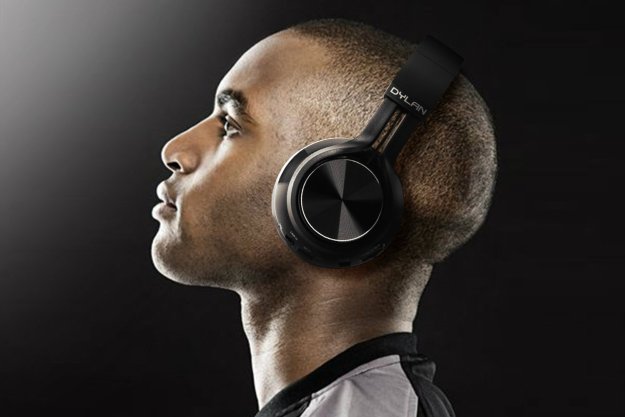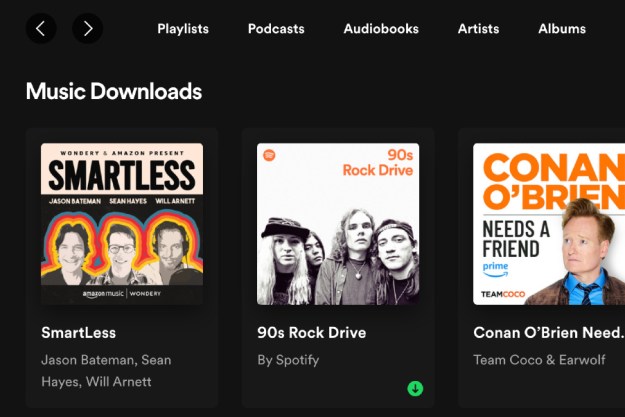As any OK Go fan will tell you, the band isn’t known for factory-produced music videos. To promote its new track I Won’t Let You Down – a sunny earworm of a tune from the band – the alt-pop quartet came up with another production that falls right in-line with its past video efforts: The new video is tightly choreographed, bursting with color, packed with enough moments that leave the viewer wondering how this thing was pulled off – and it was all shot, as usual, in one take. The sheer creative brilliance is reason why OK Go’s music videos often surpass 10 million views a piece on the band’s YouTube channel.
As the band explains it, they’re just as important as the songs themselves.
“The idea of shooting it entirely via a drone camera emerged pretty early on.”
Given the intricate nature of how each video is developed – from dancing in-sync on treadmills, creating perspective illusions, and, now with I Won’t Let You Down, shooting with a drone – it might seem like OK Go flips the script, writing songs to support cool videos and interesting visual ideas rather than the other way around. But frontman Damian Kulash is quick to point out that it’s not so much that music videos like I Won’t Let You Down have some special primacy in OK Go-land; he says the band sees videos as one element of a much more expansive whole – a digital means to the same creative end that the band’s songs also pursue.
In other words, the songs and the videos – everything, really – are all meant to create as many entry points for people as possible into the dazzling, dancing world of OK Go. The same goes for the band’s live shows, and even extracurricular creative projects like the TV show Kulash said the band is in the process of pitching to the networks. (“Am I allowed to say more yet?” he asks his PR attendant, before getting shut down). The band also has a big spring tour planned, and a couple more videos in the works that are tied to the latest album, Hungry Ghosts.
And because of the viral elements that tend to send its elaborate videos zipping around the Web, OK Go’s YouTube channel – another entry point – has now garnered around 170 million views in all, bringing more people to the OK Go universe.
The new video, which has helped propel the band’s YouTube total even higher, was shot in Japan over four days. Kulash says the idea of shooting it entirely via a drone camera emerged pretty early on, once the band decided to go for visual effects that include a massive, choreographed crowd. The band, Kulash tells us, had always wanted to “do a Busby Berkeley kind of thing,” which pretty much meant shooting people from up high – something a drone is perfect for.
“Making videos is a lot like writing a song,” Kulash says. “But when you get a riff, you can’t just ride that for three minutes. You want to be able to turn a corner and have different emotional experiences, to really follow an arc of emotions. One of the challenges of making a video is keeping it simple and having very clear boundaries, but in a way that also allows you to keep on having moments of surprise and wonder. And for us, the videos are just fun.
“We also run our own record label. I really don’t see why you have to differentiate between songs and video.”
“When you think about it, creativity is changing. The sandbox we’re playing in is basically ones and zeroes,” Kulash says, referring to our modern digital world. “But there’s always been a visual component to pop music. Can you really hear Material Girl and not see Madonna walking down those stairs?”
Among the factors that took the band to Japan for the shoot, Kulash says they were approached to work with director Morihiro Harano. He connected the band with an agency that works with the automaker, Honda, and the band can be seen in the video riding small Honda vehicles that look like a cross between a chair and a scooter.
The band spent almost a month in Japan, where they hit up locales like Tokyo’s famed Robot Restaurant. Kulash says they had a month of rehearsal, taking into account everything from developing the idea to figuring out how the drone would move while filming, to how many dancers could fit in the frame if the drone was a certain distance up in the sky.
“(Harano) has done incredible work and is an idol of mine,” Kulash says. “We met in France. He’s a fan of our work, so we started going back and forth about what we could do for a video. We went to Japan to play with these things Honda calls a “personal mobility device.” They’re controlled by your weight, and the tiniest shift in weight influences the direction where it goes, and we played around with them for a week.”
Among the techniques used to record the video, the song was slowed-down during the shoot. Moving slower allowed more precision for the complicated choreography. The video was then sped back up, making things seem fast and fluid.
Still, the shoot, which took place outside Tokyo, took dozens of times to get right. The band, Kulash recalls, actually ended up with three takes of the video that were good enough all the way through.
“We just like making things,” Kulash says. “Tim [Nordwind], the bassist, and I have known each other for 28 years now. Our friendship was built around making all these creative projects together.
“It always starts, for us, as songwriters, one or two or four people in a room. And once that song exists, a lot of different things can flow off that. We also run our own record label. I really don’t see why you have to differentiate between songs and video. We get to chase creative ideas, no matter in what direction they lead. How you characterize it isn’t really that important to me.”
Editors' Recommendations
- The 5 best new GoPro Hero 10 Black features I love to use
- Model train set looks like the real thing in this GoPro video


